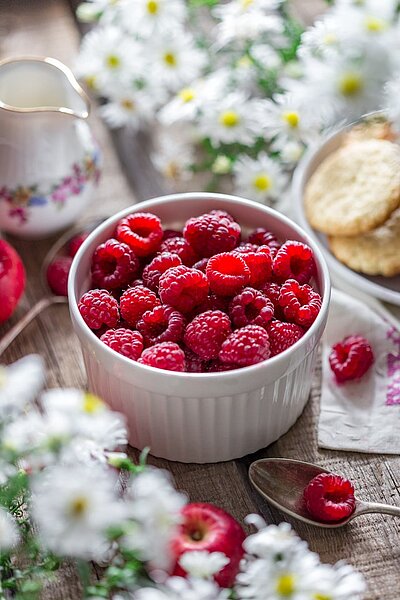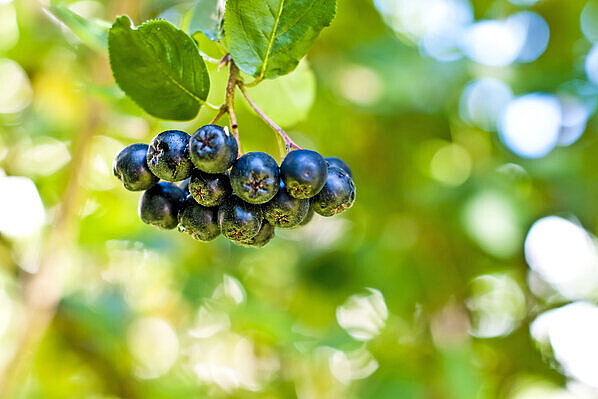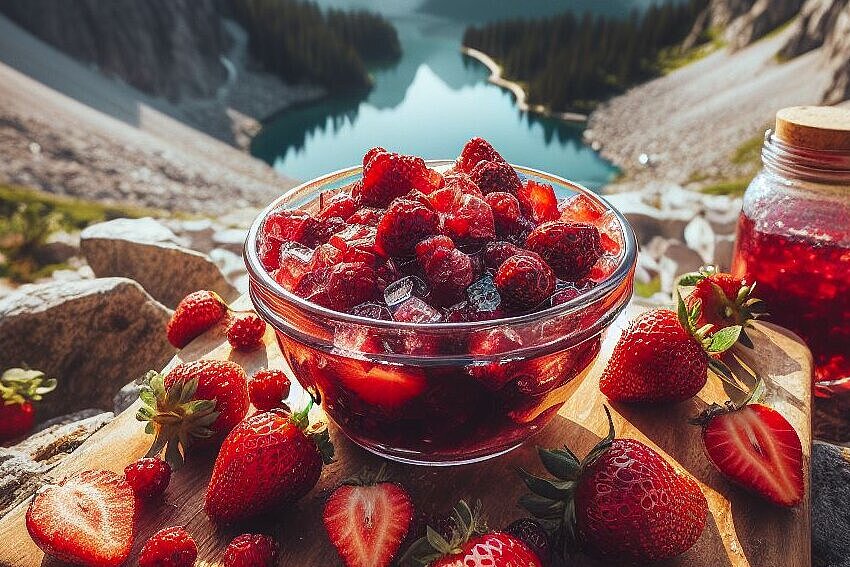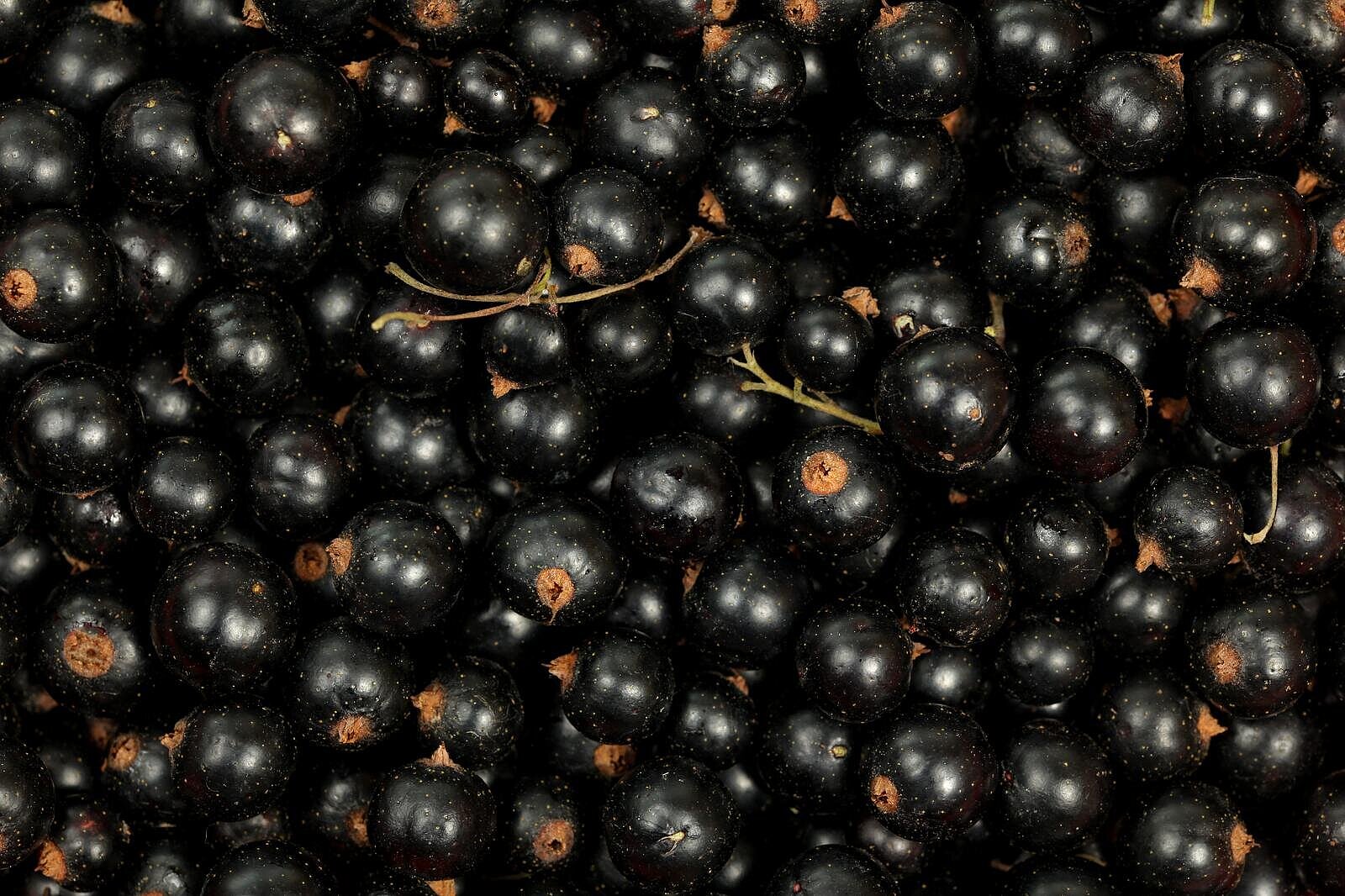Raspberry pomace

You may have heard of raspberry pomace, an ingredient found in some dog foods or snacks. But what is raspberry pomace and what are the advantages and disadvantages for your dog? In this article, you will find out more about this special ingredient and how you can incorporate it into your dog's diet.
What is raspberry pomace?
Raspberry pomace is a by-product of juice or wine production from raspberries. The raspberries are pressed and the juice extracted. The remaining solid part, which still contains pulp, seeds and skins, is called pomace. Raspberry pomace is often dried and ground in order to preserve it and use it as an ingredient.
What are the benefits of raspberry pomace for dogs?
Raspberry pomace has several benefits for dogs, mainly due to its high fiber, antioxidant and vitamin content. Fiber is important for healthy digestion and can help with constipation or diarrhea. Antioxidants protect the cells from free radicals that can be caused by environmental factors or stress. Vitamin C strengthens the immune system and can inhibit inflammation. Raspberry pomace also has a low glycemic index, which means that it causes blood sugar levels to rise only slowly. This can be beneficial for dogs with diabetes or who are overweight.
What are the disadvantages of raspberry pomace for dogs?
Raspberry pomace also has some disadvantages for dogs that you should be aware of. For one thing, raspberry pomace can trigger allergies or intolerances if your dog is sensitive to fruit or certain ingredients. Secondly, raspberry pomace contains xylitol, a natural sweetener that is safe for humans but can be toxic to dogs. Xylitol can increase insulin levels and lead to life-threatening hypoglycaemia. Xylitol can also cause liver damage or lead to blood clotting disorders. The amount of xylitol in raspberry pomace is small, but you should still be careful and not give your dog too much.
How can you feed raspberry pomace to your dog?
If you want to feed your dog raspberry pomace, there are a few things you should bear in mind. Firstly, you should always make sure that the product does not contain any other additives such as sugar or preservatives. Secondly, you should adjust the amount of raspberry pomace to your dog's weight and state of health. A rule of thumb is that you should not give your dog more than 10 grams of raspberry pomace per kilogram of body weight per day. This corresponds to about one teaspoon per 5 kilograms of body weight. If your dog has diabetes or liver problems, you should reduce the amount even further or avoid it altogether. You should also always make sure that your dog drinks enough water to avoid constipation.
Raspberry pomace is an interesting ingredient for dogs that can have some health benefits. However, you should also be aware of the possible disadvantages and only give your dog a reasonable amount.
If you notice any signs of hypersensitivity or poisoning in your dog, you should see your vet immediately. We are not a substitute for a vet, but we try to be as accurate as possible. Every dog reacts differently and we recommend you get a second opinion or consult your vet if in doubt.
Stay healthy and take good care of your four-legged friend!😊
Similar to Raspberry pomace
Aronia pomace is the by-product of aronia juice production. The berries are pressed and the juice bottled. The leftover pomace still contains many valuable ingredients such as tannins, pectins and...
Strawberry pomace is what remains of the strawberries after juice or jam production. It consists of the pressed fruit and green leaves that are normally thrown away. However, strawberry pomace is...
Currant pomace is what remains after the juice or wine has been made from the currants. It consists of the skins, seeds and stems of the berries, which still contain many valuable ingredients....
Blackcurrant pomace is a by-product of blackcurrant juice and jam production. The berries are pressed and the remaining pomace is dried and ground. It still contains many valuable ingredients such...



